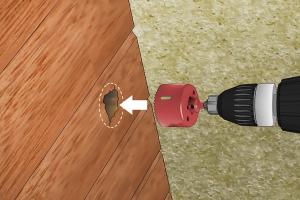Ultimate Guide to Repairing Woodpecker Holes in Cedar Siding

-
Quick Links:
- Introduction
- Understanding Woodpecker Damage
- Materials Needed
- Step-by-Step Repair Guide
- Preventive Measures
- Case Studies
- FAQs
Introduction
Cedar siding is a popular choice for homeowners due to its durability and natural aesthetic appeal. However, it can fall victim to woodpecker damage, leaving unsightly holes that can compromise the integrity of your home. In this comprehensive guide, we will walk you through the process of repairing woodpecker holes in cedar siding, ensuring that your home remains both beautiful and structurally sound.
Understanding Woodpecker Damage
Woodpeckers are often attracted to cedar siding for several reasons:
- Seeking insects that may be living in or under the wood.
- Creating nesting sites.
- Marking their territory.
Understanding the behavior of woodpeckers and the extent of the damage they can cause is crucial before commencing repairs. In some cases, the damage is superficial, while in others, it can be extensive, affecting the structural integrity of the siding.
Materials Needed
Before starting your repair, gather the following materials:
- Wood filler
- Sandpaper (medium and fine grit)
- Putty knife
- Paint or stain to match the cedar siding
- Caulk (optional, for sealing joints)
- Protective gear (gloves, goggles)
Step-by-Step Repair Guide
Follow these steps to effectively repair woodpecker holes in cedar siding:
Step 1: Assess the Damage
Inspect the area around the holes. If the damage is extensive, you may need to replace entire panels of siding.
Step 2: Clean the Area
Remove any loose wood or debris around the holes. This will ensure proper adhesion of the wood filler.
Step 3: Apply Wood Filler
Using a putty knife, fill the holes with wood filler. Make sure to overfill slightly, as the filler will shrink as it dries.
Step 4: Sand the Area
Once the filler has dried completely, sand the area with medium-grit sandpaper, followed by fine-grit sandpaper to ensure a smooth finish.
Step 5: Paint or Stain
Apply paint or stain that matches your cedar siding to blend the repaired area with the rest of the siding.
Step 6: Seal the Repair (Optional)
For added protection against moisture and pests, consider applying caulk around the edges of the repair.
Preventive Measures
To prevent future woodpecker damage, consider the following measures:
- Install bird deterrents such as reflective tape or wind chimes.
- Use vinyl siding or other materials that are less attractive to woodpeckers.
- Regularly inspect your siding for insect infestations and address them promptly.
Case Studies
Let's explore some real-world examples of successful woodpecker hole repairs:
Case Study 1: Homeowner A
Homeowner A noticed woodpecker holes in their cedar siding after moving into their new home. By following our step-by-step guide, they successfully repaired the holes and applied a matching stain, restoring the appearance of their siding.
Case Study 2: Homeowner B
Homeowner B faced extensive woodpecker damage, leading to the replacement of multiple siding panels. After replacing the panels, they installed bird deterrents, which significantly reduced future damage.
FAQs
1. How can I tell if the damage is severe?
If the holes are larger than a quarter or if you notice crumbling wood, the damage may be severe.
2. Can I repair woodpecker holes in winter?
Yes, as long as temperatures are above freezing, you can repair woodpecker holes in winter.
3. What type of wood filler is best for cedar siding?
Two-part epoxy wood fillers are often recommended for their durability and resistance to the elements.
4. How do I match paint or stain to my cedar siding?
Take a sample of your siding to a local hardware store for a color match.
5. Will repairing the holes stop woodpeckers?
While repairs will restore the appearance, consider installing deterrents to prevent further damage.
6. How often should I inspect my cedar siding for damage?
Regular inspections at least twice a year can help catch damage early.
7. Can I use caulk to fill woodpecker holes?
Caulk can be used for smaller holes but is not ideal for larger damages; use wood filler instead.
8. Are there professional services for woodpecker damage repair?
Yes, many pest control and home maintenance services specialize in this type of repair.
9. How can I prevent woodpecker damage in the future?
Use deterrents, maintain the integrity of your siding, and address any pest infestations promptly.
10. Is it possible to replace a section of cedar siding?
Yes, if the damage is extensive, replacing the affected section may be necessary. This is best done by a professional to ensure proper installation.
Random Reads
- How to treat carpet burns
- How to turn a voice memo into an mp3
- How to open desktop computer
- How to open dat file mac
- How to start windows in safe mode
- Sync samsung notes windows pc
- Simple techniques create clouds photoshop
- How to write in hindi in microsoft word
- How to write html code
- How to turn off firewall